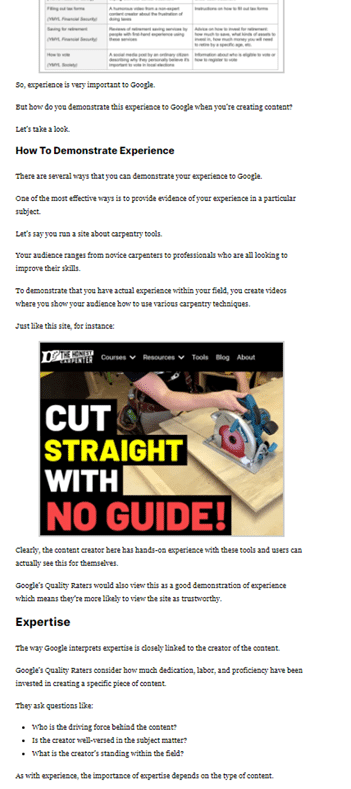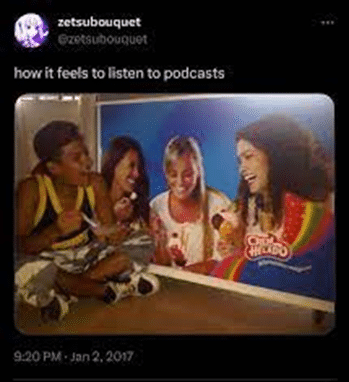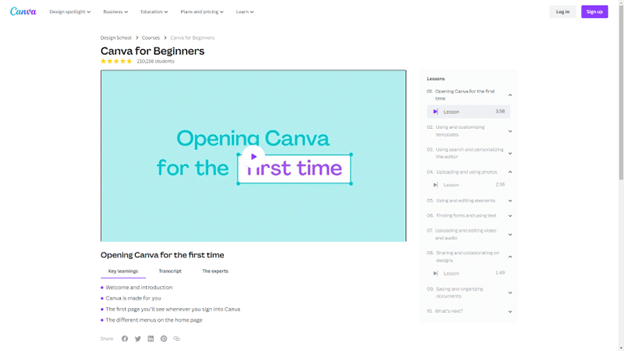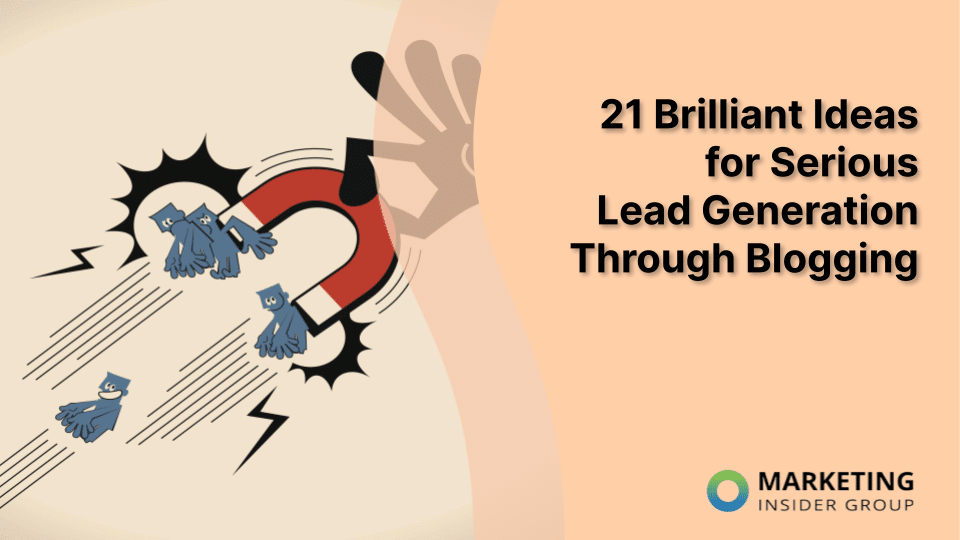
10 B2B Content Marketing Examples With Serious Vision
Undoubtedly, you want your content marketing to be excellent and get results. I can say from experience that learning from others how to do so is much better than trial and error.
For that reason, you should emulate top B2B content marketing examples. By finding out what works from other successful brands, you can reach your goals more quickly.
For instance, I applied lessons from leaders in content marketing to our work at MIG. As a result, we were able to scale to a million website visitors and rank in the top three results for hundreds of keywords for ourselves and our clients.
Now, I’m going to share with you a handful of the best B2B content marketing examples that inspire our team. Check out the list of our favorites.
Key Takeaways:
- Leverage your brand identity and add personality to your content like Grange and CB Insights.
- Like HubSpot and Intuit, design content that displays thought leadership and creates a community to help spread your message further.
- Find tools that promote more user-generated content like Houzz and Adobe.
- Visual elements and interactive elements grab attention, so use them wherever it’s practical like Canva does.
- Imitate Backlinko’s great long-form content that is full of credible data but still straightforward and easy to read.
10 B2B Content Marketing Examples That Have a Lot To Teach Us All
The following B2B content marketing examples show how industry leaders get it done. For each one, I’ll highlight:
- Who they are
- A particular thing they do well
- How they do it
- How you can do it too
Let’s jump in!
1. Grange Insurance Uses Brand Identity To Stand Out
Grange Insurance sells to individuals and businesses, but their superior B2B strategy is where they knock it out of the park. They’re one of my favorite B2B content marketing examples because they’ve built an ironclad brand identity of being down-to-earth and approachable.
How They Do It
Grange hits the mark by humanizing its insurance agents. This is no small task for the business insurance that people associate with dry, confusing jargon and challenging claims processes.
Their competitors often bank on sheer size and longevity to build trust. However, Grange does the opposite, spotlighting their independent local agents, real customers, and associates in videos and LinkedIn posts.

Grange also does everything possible to put its audience at ease and simplify the process, which involves choosing from tons of products to create a customized policy. The firm offers to unravel the mystery right away by offering risk assessments and targeting different industries.
Even though agents from other companies can work with clients in the same way, Grange’s B2B content marketing examples distinguish them with an identity as “the little guy” who will listen to customer needs. (And it does this even though it‘s a big franchise-led company. 😉)
How You Can Follow Their Example
While you want to be a thought leader and expert in your industry, that’s only the underlying foundation of your content. What separates you from the field is your personality.
(Think Michael Scott from “The Office” closing the deal at Chili’s. Just try not to be as clueless elsewhere in your business. 🤣)
Create a clear and concise vision for your brand and the specific personas you want to target. Don’t try to get everybody. Instead, use your small size and personal approach to your advantage.
2. Zendesk Delights in Customer Delight
Zendesk provides customer experience software and started as a fledgling startup operating out of a Copenhagen loft in 2007. So how did it become a billion-dollar powerhouse?
The brand is one of the top B2B content marketing examples that focuses on building relationships and delighting customers.
How They Do It
Zendesk practices what it preaches, inspiring confidence in its audience. I mean, shouldn’t a customer experience company be masters of customer experience?
The service is a hub for customer relationship building and always gives away “free samples” with goodies that educate their target audience. On the home page, you can download a complimentary eBook, sign up for a free demo, or register for the next Zendesk Global Conference.
How You Can Too
Give away a taste of what you can do for your clients in your B2B content marketing examples. For example, a legal firm might provide free templates or forms to newsletter subscribers, or an accounting firm can offer something similar for budgeting.
The target audience will see how good you are at that one small thing. Then, they’ll turn to you for more pressing needs.
We’ve seen the value of that firsthand at MIG. We preach that putting out content every day is the best content marketing strategy.
Naturally, you’d expect us to have a fresh blog daily, and we do. By walking the walk, we continue to attract top B2B clients.
3. HubSpot Seizes Industry Thought Leadership
HubSpot is a leader in customer relationship management software. The company created the term “inbound marketing” and has been a driving force in shaping the digital marketing industry with its thought-leading B2B content marketing examples.
How They Do It
HubSpot has a never-ending supply of free courses and content. From the jump, the team invites you into a community where you can share ideas with others trying to gain marketing traction.
So, you’ll come for the wealth of education and stay to sign up for HubSpot’s products once you see their value. From free courses at the HubSpot Academy to not one, but three blogs, to the yearly INBOUND conference, HubSpot is the go-to expert for inbound marketing know-how.
How You Can Too
B2B clients love it when you invest in their success, so assist them with the how-tos of related topics through webinars, speaking engagements, and ebooks. As you establish thought leadership, you’ll build a loyal fanbase that appreciates your assistance.
4. Intuit Creates a Sense of Community With User-Generated Content
Intuit provides tax and business accounting software and products, including products QuickBooks, TurboTax, and Credit Karma. The company is another of the top B2B content marketing examples that create a supportive community around an otherwise boring subject.
How They Do It
The QuickBooks ProAdvisors program gets power users to engage more with the brand. Intuit incentivizes the segment of professional accountants, tax advisors, and business consultants by certifying them as reliable sources of advice.
These client experts, in turn, gain a platform to attract their own clients and enhance their reputation. Further, Intuit’s small business owners and self-employed customer segments gain valuable connections and expert advice to meet their accounting and tax needs.
Intuit also hosts a live forum, the TurboTax Live Community. Here, tons of user-generated content also provides value-driven, customer-centric material.
Social media campaigns, like TurboTax’s Share Your Success Story on Facebook, encourage further engagement and promotion. Also, once a customer uses TurboTax, they receive a prompt to share a review on Twitter.
How You Can Too
If you offer products that require some work on the part of your clients, create a forum for them to share tips and tricks with each other. Video learning and online events can also bring the community together.
When you invite comments on blogs, you can also build a community like other B2B content marketing examples. Interact on social media and incentivize honest reviews through contest entries or discounts.
At a minimum, highlight successful customers through case studies. They’ll appreciate the opportunity for cross-promotion and link-building for their own brand.
5. Houzz Adds Value With Its Idea Center
Houzz is an online company straddling B2B and B2C commerce. In its B2B content marketing examples, you’ll see how it connects architects, designers, painters, builders, suppliers, and a dozen other professionals with end customers.
How They Do It
Houzz’s Stories and Advice channel is a library of UGC. Home renovation and design professionals can post guides, tips, and other advice, using the Houzz platform to drive business for themselves and grow their reputation.
On discussion forums for home and gardening, users can post projects and ideas, get feedback, and even vote on other users’ design choices. Like Intuit’s QuickBooks, Houzz has created its own social network with its online brand community, creating long-term value for users.
How You Can Too
As I already touched on, look for ways to invite more discussion and cross-promotion to create a stronger community. UGC is key, but you’ll also want to have a guest-posting strategy to connect with pros in related industries and build each other’s traffic and awareness.
6. Shopify Concentrates on Customer Support
This Canadian cloud-based e-commerce firm helps small and mid-sized businesses start, grow, and manage their companies. They’re one of the top B2B content marketing examples in attention to customer support.
How They Do It
In operations and content, Shopify keeps coming up with new and better ways to support entrepreneurs and SMBs. Their content marketing framework has tons of variety, including:
- Podcasts and videos
- Free stock photos
- Guides and manuals
- Forums and success stories
- A company blog
Shopify also offers a network of experts and free tools that cover the things small business owners need to launch. Plus, a 24/7 help desk is always ready to help.
How You Can Too
Customer support and content marketing should not be isolated departments. When the two work together, you quickly find the pain points that your clients want answers to in your own B2B content marketing examples.
You’ll have to use tools that integrate your software, which is why you need a strong toolbox of marketing technology solutions. As a smaller company, you’ll struggle to do it all, so outsourcing content creation and strategy is usually the right choice with a high ROI.
Seriously consider white-labeling your content marketing. You can share insights with the writing team, which uses the information to create posts your audience will appreciate.
7. Adobe Goes Visual
You’re likely already familiar with Adobe, with its popular PDF reader and tools for audio-visual content creation, editing, and publishing. In line with its creative focus, the company made sure its B2B content marketing examples are just as visual.
How They Do It
Adobe takes advantage of Instagram as its UGC platform of choice, where customers share their visually stunning content. The company has created an entire brand community for users to showcase their work, get inspiration, and receive feedback from other creatives.
The differentiator here is that instead of letting people just post anything, Adobe creates a theme for users to follow each month. This guidance encourages the same customers to contribute regularly.
As a result, Adobe drives more content creation. It also makes exploring and engaging with the images more compelling because there’s always a fresh concept.
As with the other B2B content marketing examples, Adobe isn’t just running a one-off campaign on a social media channel. They’ve planted the seeds for ongoing, self-perpetuating user-generated content.
Customers become co-creators, participating with the parent brand community to foster growth and share knowledge. In the process, everyone wins. In turn, the brand becomes an even better-established industry thought leader.
How You Can Too
For UGC success as these B2B content marketing examples have done, don’t just ask for content for the sake of content. Make it the good stuff – the practical, concept-sharing, worthwhile content.
You’ll find out what to ask for when you discover the buyer personas that are most valuable to your brand. Align that with your brand identity and listen to feedback on what your target demographics desire.
You’ll not only inspire engagement but also achieve more long-term marketing goals. The more work and thoughtfulness you put into creating a platform for your B2B user-generated content, the more you empower your brand community to grow on its own.
8. Brian Dean of Backlinko Makes SEO Simple in Long-Form Content
Most people in marketing know Brian Dean for his Backlinko blog. (However, that’s merely a funnel for his primary revenue-generators, premium training courses.)
As a premier content creator, Backlinko is one of the top-tier B2B content marketing examples out there demonstrating the power of long-form content.
How He Does It
Backlinko is clear proof that blogging still works. Dean leans into longer articles that dig exhaustively into a subject.
Though posts are often over 3000 words and have abundant statistics, they are not hard to read, which is why he consistently ranks high for keywords. Check out a snapshot of a blog post below to see why:

Dean uses lots of white space, images, and videos to break up text and make his lessons more visual. After a decade of publishing, he still delivers value and gets great rankings.
How You Can Too
You need to consistently present high-quality, well-researched content to your audience. At the same time, that information needs to be digestible, or your audience will go elsewhere for help.
Start by dedicating sufficient time to researching topics and outlining articles. You should especially spend time on basic outlining to guide writers when you hire a content marketing firm for help.
Create a replicable writing process that allows you to generate meaty articles like Dean’s B2B content marketing examples. Then, make things easy to read with the following elements:
- A pleasing font, such as Arial or Calibri, with a size that is readable on mobile
- A lot of headings and bulleted or numbered lists to break up information
- Shorter sentences with direct language that aims for a Grade 8 level
- Images and videos to illustrate your points
Another step we recently took was ensuring articles have a Contents section that makes the page easier to navigate so readers can get to the information they want most. These steps boost your hits and keep readers on the page longer.
9. CB Insights Puts Personality Into Its Newsletter
CB Insights is a market intelligence platform that analyzes data points on venture capital, startups, patents, partnerships, and tech news. They target the world’s most influential companies, VCs, and governments as clients.
How They Do It
Despite the topic sounding super serious and dry, CB Insights stays light-hearted enough to grab attention by keeping things real. You’ll find many professionals who include CB Insights as one of their favorite B2B content marketing examples.
The company puts out a witty and engaging newsletter with snappy headlines that make you look twice. As their marketing team page says, “The B in B2B doesn’t have to mean boring.”
They also post and repost images and snippets that deal with the reality of being a worker in the digital age. At the same time, their insights are always relevant and have the support of data.

How You Can Too
Understand your buyers’ goals and speak to their hearts with content that keeps it real. You can be silly or snarky as long as you always bring the goods with content that adds value.
Don’t be goofy simply for the sake of being goofy but don’t be boring, either. Write human-generated content for the people you want to serve.
Yes, this means you shouldn’t rely on AI for all the answers. However, you’ll reap the reward of content that builds an audience and respect.
10. Canva Boosts Adoption With Interactive Education
Canva sells cloud-based graphic design tools for creating on-brand marketing content, sales presentations, training videos, and more. It publishes shining B2B content marketing examples through interactive education.
How They Do It
Canva starts with a dummy-proof product but puts out additional material for users who want to maximize the service’s capabilities. Free online courses, tutorials, and blogs give creatives lots of useful resources.
The courses are the crown jewels of its content strategy, and Canva allows team members and other industry experts to teach these lessons for variety. This approach has earned the company hundreds of thousands of subscribers and visits.

How You Can Too
Start developing courses with the help of an expert or do-it-yourself software. If you can’t yet create your own courses, look to other engaging content, such as podcasting or YouTube posts to educate your audience.
As you know, coming up with content gets exhausting. Are you utilizing your team’s brilliance instead of thinking you have to do everything on your own?
Let gifted workers outside of your marketing department share in the thought leadership. Also, create opportunities for micro-influencers and known names to share insights with your audience in your B2B content marketing examples.
As a content creation agency, we fully embrace this approach. Even as we provide blogs and longer think pieces for clients, we encourage them to keep writing. The more content, the better!
Follow the Model of These B2B Content Marketing Examples for Mega Growth
These brands have raised the bar on B2B content marketing and keep elevating their game. However, they didn’t create the sheer depth of their content overnight or have it all accidentally fall into place.
Each brand had a visionary plan of action to get from point A to point B and beyond via a clear marketing strategy. They also learned from content marketing examples that came before them.
Everyone has to start somewhere, and if you’re feeling overwhelmed, you can get experts in your corner. Call on our team at MIG for assistance in creating consistent, inspired content just like these excellent B2B content marketing examples.



![How to Create Effective Thought Leadership Content [Examples Included]](https://marketinginsidergroup.com/wp-content/uploads/2023/09/Screenshot-2023-08-29-at-11.07.57-AM.png)


